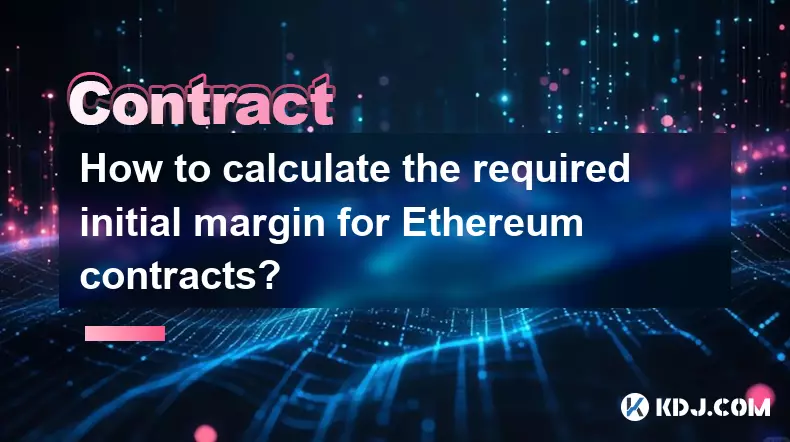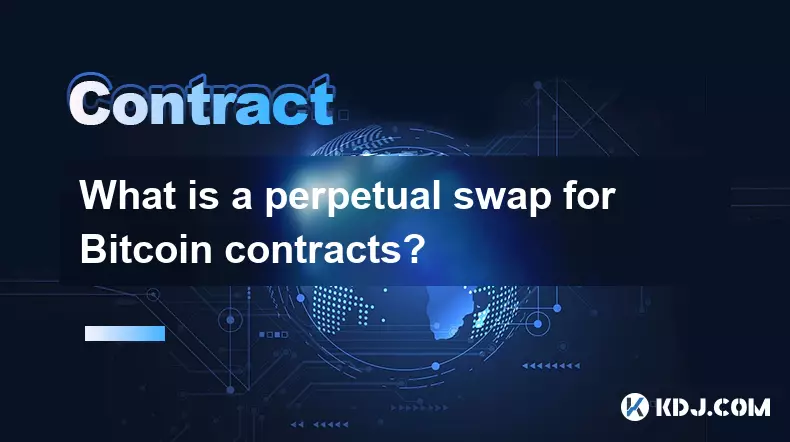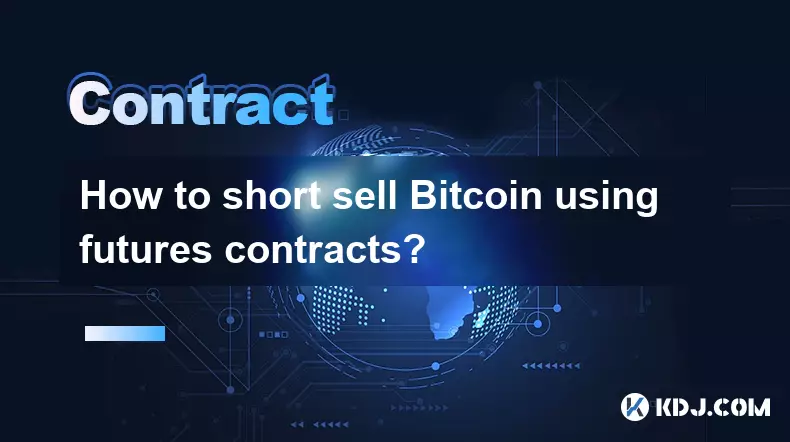-
 bitcoin
bitcoin $118548.520763 USD
3.67% -
 ethereum
ethereum $4352.564943 USD
4.79% -
 xrp
xrp $2.964058 USD
4.22% -
 tether
tether $1.000565 USD
0.05% -
 bnb
bnb $1028.372955 USD
1.46% -
 solana
solana $221.373507 USD
6.00% -
 usd-coin
usd-coin $0.999933 USD
0.02% -
 dogecoin
dogecoin $0.248633 USD
6.85% -
 tron
tron $0.341444 USD
2.38% -
 cardano
cardano $0.852946 USD
5.82% -
 hyperliquid
hyperliquid $47.869306 USD
6.15% -
 chainlink
chainlink $22.561476 USD
6.01% -
 ethena-usde
ethena-usde $1.001258 USD
0.05% -
 avalanche
avalanche $30.660000 USD
2.06% -
 stellar
stellar $0.400917 USD
9.76%
How is margin calculated for Bitcoin futures?
Bitcoin futures margin acts as collateral, with requirements shaped by leverage, volatility, and contract type, while liquidation occurs if account equity drops below maintenance levels.
Sep 29, 2025 at 10:55 pm

Understanding Bitcoin Futures Margin Mechanics
1. Margin in Bitcoin futures refers to the collateral required by exchanges to open and maintain leveraged positions. This collateral ensures that traders can cover potential losses on their trades. The amount of margin depends on the leverage used, the size of the position, and the volatility of Bitcoin’s price at the time of trade execution.
2. Initial margin is the percentage of the total contract value a trader must deposit to enter a futures position. For example, if an exchange requires 10% initial margin and a trader wants to control $50,000 worth of Bitcoin futures, they must deposit $5,000 upfront. This figure varies across platforms and contract types, including perpetual versus quarterly futures.
3. Maintenance margin is the minimum equity level a trader must maintain in their account to keep the position open. If the account balance drops below this threshold due to adverse price movements, the system triggers a margin call or automatic liquidation. Most major exchanges clearly state both initial and maintenance margin requirements before order confirmation.
4. Cross margin and isolated margin are two common modes used in managing futures positions. In cross margin mode, all available funds in a trader’s account act as collateral for open positions, increasing flexibility but also risk exposure. Isolated margin limits the collateral to a specific amount assigned to each position, containing potential losses to that segment only.
Factors Influencing Margin Requirements
1. Leverage plays a central role in determining margin levels. Higher leverage reduces the required margin proportionally. A 100x leverage means a trader needs only 1% of the position value as margin. However, higher leverage increases the likelihood of liquidation during volatile market swings.
2. Market volatility directly affects margin calculations. During periods of extreme price fluctuation—common in the Bitcoin market—exchanges may increase margin requirements dynamically to mitigate systemic risk. These adjustments help prevent cascading liquidations that could destabilize trading platforms.
3. Contract type influences margin structure. Perpetual futures, which have no expiration date, often use funding rates to align their price with the spot market. These contracts may require variable margin depending on funding conditions. Quarterly or delivery-based futures typically follow fixed margin rules based on the settlement date.
4. Exchange-specific policies shape how margin is calculated and enforced. Some platforms use a tiered margin system where larger positions require proportionally higher margin percentages to discourage excessive concentration. Others implement dynamic models that adjust margin based on real-time risk metrics.
Calculating Liquidation Prices and Risk Exposure
1. The liquidation price is derived from the entry price, leverage, and maintenance margin level. It represents the Bitcoin price at which a position will be automatically closed to prevent further losses. Traders can estimate this using formulas provided by exchanges or third-party calculators.
2. Fees and funding payments impact effective margin usage. In perpetual contracts, long positions may pay funding to shorts (or vice versa) every few hours. These periodic transfers reduce available margin over time, especially during extended holding periods, affecting the proximity to liquidation.
3. Price slippage during high volatility can cause actual liquidation prices to differ from estimated values. Fast-moving markets may result in executions at less favorable rates, leading to partial or full loss of margin even before manual intervention is possible.
4. Risk management tools such as stop-loss orders, take-profit levels, and position sizing strategies are essential for preserving margin capital. Automated alerts and real-time portfolio monitoring help traders respond proactively to shifting market dynamics without relying solely on platform safeguards.
Frequently Asked Questions
What happens when my Bitcoin futures position gets liquidated?Upon liquidation, the exchange closes the position using a liquidation engine or auction mechanism. Any remaining margin after covering the loss may be partially returned, though some platforms charge a liquidation fee. The goal is to prevent the trader from owing more than their deposited collateral.
Can I add more margin to avoid liquidation?Yes, most platforms allow users to manually increase margin allocation to open positions, especially under isolated margin mode. Adding margin raises the threshold for liquidation, giving the position more room to withstand adverse price moves.
How do exchanges determine maintenance margin levels?Maintenance margin is calculated based on historical volatility, current market conditions, and the statistical likelihood of extreme price moves within a given timeframe. Exchanges use risk models to set these thresholds, often expressed as a percentage of the position's notional value.
Does using lower leverage always reduce margin requirements?Lower leverage increases the initial margin needed relative to the position size, meaning more capital must be committed upfront. While this reduces liquidation risk, it does not reduce the absolute margin requirement—it shifts it toward greater security and reduced exposure.
Disclaimer:info@kdj.com
The information provided is not trading advice. kdj.com does not assume any responsibility for any investments made based on the information provided in this article. Cryptocurrencies are highly volatile and it is highly recommended that you invest with caution after thorough research!
If you believe that the content used on this website infringes your copyright, please contact us immediately (info@kdj.com) and we will delete it promptly.
- BlockDAG, DOGE, HYPE Sponsorship: Crypto Trends Shaping 2025
- 2025-10-01 00:25:13
- Deutsche Börse and Circle: A StableCoin Adoption Powerhouse in Europe
- 2025-10-01 00:25:13
- BlockDAG's Presale Buzz: Is It the Crypto to Watch in October 2025?
- 2025-10-01 00:30:13
- Bitcoin, Crypto, and IQ: When Genius Meets Digital Gold?
- 2025-10-01 00:30:13
- Stablecoins, American Innovation, and Wallet Tokens: The Next Frontier
- 2025-10-01 00:35:12
- NBU, Coins, and Crypto in Ukraine: A New Yorker's Take
- 2025-10-01 00:45:14
Related knowledge

What is the difference between futures and perpetual contracts for Bitcoin?
Oct 02,2025 at 11:54pm
Understanding Bitcoin Futures Contracts1. Bitcoin futures are derivative instruments that allow traders to speculate on the future price of Bitcoin at...

What is the maintenance margin for Bitcoin contracts?
Oct 02,2025 at 01:36am
Decentralized Exchanges Gain Momentum in 20241. Decentralized exchanges (DEXs) have seen a significant rise in trading volume, surpassing centralized ...

How to calculate the required initial margin for Ethereum contracts?
Oct 01,2025 at 06:01am
Understanding Initial Margin in Ethereum Futures1. The initial margin for Ethereum futures contracts represents the minimum amount of capital a trader...

What is a perpetual swap for Bitcoin contracts?
Oct 01,2025 at 08:18am
Understanding Perpetual Swaps in Bitcoin Trading1. A perpetual swap is a type of derivative contract that allows traders to speculate on the price of ...

What is the best platform for trading SOL contracts?
Oct 01,2025 at 06:36am
Understanding the Role of Decentralized Exchanges in Modern Crypto Trading1. Decentralized exchanges (DEXs) have reshaped how traders interact with di...

How to short sell Bitcoin using futures contracts?
Oct 01,2025 at 02:54am
Understanding the Role of Decentralized Exchanges in Crypto Trading1. Decentralized exchanges (DEXs) have become a cornerstone of the cryptocurrency e...

What is the difference between futures and perpetual contracts for Bitcoin?
Oct 02,2025 at 11:54pm
Understanding Bitcoin Futures Contracts1. Bitcoin futures are derivative instruments that allow traders to speculate on the future price of Bitcoin at...

What is the maintenance margin for Bitcoin contracts?
Oct 02,2025 at 01:36am
Decentralized Exchanges Gain Momentum in 20241. Decentralized exchanges (DEXs) have seen a significant rise in trading volume, surpassing centralized ...

How to calculate the required initial margin for Ethereum contracts?
Oct 01,2025 at 06:01am
Understanding Initial Margin in Ethereum Futures1. The initial margin for Ethereum futures contracts represents the minimum amount of capital a trader...

What is a perpetual swap for Bitcoin contracts?
Oct 01,2025 at 08:18am
Understanding Perpetual Swaps in Bitcoin Trading1. A perpetual swap is a type of derivative contract that allows traders to speculate on the price of ...

What is the best platform for trading SOL contracts?
Oct 01,2025 at 06:36am
Understanding the Role of Decentralized Exchanges in Modern Crypto Trading1. Decentralized exchanges (DEXs) have reshaped how traders interact with di...

How to short sell Bitcoin using futures contracts?
Oct 01,2025 at 02:54am
Understanding the Role of Decentralized Exchanges in Crypto Trading1. Decentralized exchanges (DEXs) have become a cornerstone of the cryptocurrency e...
See all articles










































































